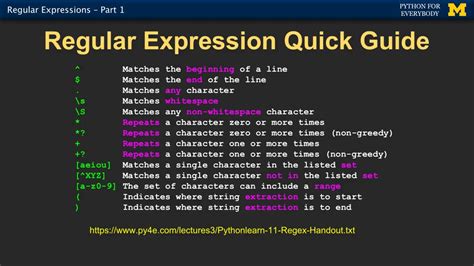Create Regex Expression

Regular expressions, also known as regex, are a sequence of characters that define a search pattern used for string matching. The syntax and structure of regex can vary depending on the programming language being used, but many elements are common across different environments. Below is an introduction to creating regex expressions, along with examples and explanations of some common patterns.
Basic Concepts
- Literal Characters: Most characters match themselves. For example, the regex
hellowould match the string “hello”. - Metacharacters: These have special meanings and are used to specify patterns. Common metacharacters include
.,^,$,*,+,?,{,},[,],|,(, and)..matches any single character except a newline.^asserts the start of the line.$asserts the end of the line.*matches 0 or more of the preceding element.+matches 1 or more of the preceding element.?matches 0 or 1 of the preceding element.{n, m}matches at leastnand at mostmof the preceding element.[and]are used to specify a set of characters.|is used for alternatives.(and)are used to group elements.
Character Classes
Character classes are used to match a set of characters. For example:
[abc]matches any of the characters “a”, “b”, or “c”.[^abc]matches any character that is not “a”, “b”, or “c”.\wmatches any word character (equivalent to[a-zA-Z0-9_]).\Wmatches any non-word character.\dmatches any digit (equivalent to[0-9]).\Dmatches any non-digit character.\smatches any whitespace character (including spaces, tabs, and line breaks).\Smatches any non-whitespace character.
Examples
Matching Email Addresses:
^[a-zA-Z0-9._%+-]+@[a-zA-Z0-9.-]+\.[a-zA-Z]{2,}$This regex breaks down as follows:
^asserts the start of the line.[a-zA-Z0-9._%+-]+matches one or more of the allowed characters before the@.@matches the@symbol literally.[a-zA-Z0-9.-]+matches one or more of the allowed characters after the@and before the last dot.\.matches the dot literally.[a-zA-Z]{2,}$matches the domain extension (it must be at least 2 characters long).
Matching Phone Numbers (US format):
^?([0-9]{3})?[-. ]?([0-9]{3})[-. ]?([0-9]{4})$This regex breaks down as follows:
^asserts the start of the line.?optionally matches a opening parenthesis.([0-9]{3})matches exactly 3 digits (the area code).?optionally matches a closing parenthesis.[-. ]?optionally matches a separator.- The pattern repeats for the next 3 digits and the final 4 digits.
Matching URLs:
^(http|https):\/\/[a-zA-Z0-9.-]+\.[a-zA-Z]{2,}(\/[^\s]*)?$This regex breaks down as follows:
^asserts the start of the line.(http|https)matches either “http” or “https”.:\/\/matches the “://” literally.[a-zA-Z0-9.-]+matches the domain name.\.matches the dot literally.[a-zA-Z]{2,}matches the domain extension.(\/[^\s]*)?optionally matches any path or parameters after the domain.
These examples illustrate how regex can be used to match various patterns in strings, from simple to complex. Regex is a powerful tool for text processing and validation, but it can be complex and requires practice to master.


